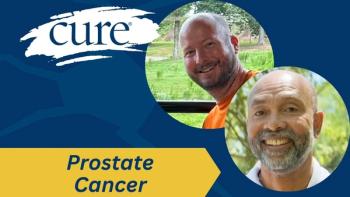
- CURE Summer 2025
- Volume 24
- Issue 02
Funding for Cancer Research: Hope in a State of Fear
Key Takeaways
- Cancer research funding involves federal, state, and private resources, with NIH and NCI as major contributors.
- Proposed 2026 budget cuts to NIH threaten progress in cancer research and treatment advancements.
Cancer is nonpartisan. It touches everyone — cutting across religion, race, ethnicity, sexual orientation and socioeconomic status.
Cancer is nonpartisan. It touches everyone — cutting across religion, race, ethnicity, sexual orientation and socioeconomic status. As a community, we fight to prevent, diagnose, treat, cure and grieve this “Emperor of All Maladies.” There is, and will continue to be, tremendous hope and opportunity in the field of oncology, fruits reaped by the long-standing commitment and investment in scientific discovery.
The funding landscape for cancer research is complex, with multiple stakeholders invested in improving outcomes. There is an intricate woven mix of federal, state and private resources set up to study and fight cancer. The National Institutes of Health (NIH) and the National Cancer Institute (NCI) are by far the largest federally funded mechanisms that exist to combat cancer. You and I, taxpayers, are the largest funders of health and research in the United States.
In 1971 the National Cancer Act, an amendment to the Public Health Service Act of 1944, led to the establishment of the NCI, officially declaring our “war on cancer.” The act granted broad authority to the director of the NCI and significantly increased funding to academic research institutions. Private institutions, foundations and pharmaceutical companies also play a critical role in this battle and, together with federal funding, have led to significant improvements in outcomes and overall survival for people diagnosed with cancer. NIH and NCI funding contributed to 99% of therapies approved between 2014 and 2019, and ongoing advances will likely contribute to the future of cancer care in America and globally.
The fiscal year 2026 budget proposes a \$17.5 billion cut to the NIH, including the NCI, amounting to a 37% cut in funding. We cannot accept this! Our community of scientists, clinicians, patients and caregivers cannot allow a climate of fear and budget cuts to slow down discovery. In a recent powerful letter to the American people, scientists spanning the political spectrum representing the nation’s top medical and scientific researchers, including Nobel laureates elected members of the National Academies of Sciences and Medicine, wrote that “… the voice of science must not be silenced. We all benefit from science, and we all stand to lose if the nation’s research enterprise is destroyed.” Cutting funding for critical cancer research, including clinical trials, would destroy this great enterprise that is baked into the fabric of our country. Rapid changes and cuts to the infrastructure of the Food and Drug Administration risk slowing down the approval of novel therapies for patients in waiting. We need to act rationally and swiftly to urge our elected officials to change course and continue to fund the critical work that will continue to lead to discovery and cure.
As I sit with a young woman who newly diagnosed with stage 4 lung cancer, she asks me if there is hope: “How will our current landscape of budget cuts, fear and skepticism affect my outcome?” I tell her that I don’t know, but I promise her that we will do everything in our power as a community to allow her to live well and with a focus on quality and dignity of life.
For the readership of CURE, please understand that basic science research may be under fire, but the practice of oncology has not changed. Clinics are functioning as usual. Clinical trials are functioning as usual. Treatment, progress and cure are still within reach.
Martin Luther King Jr. said, “The arc of the moral universe is long, but it bends towards justice,” so too is scientific progress — the discoveries of tomorrow are fundamentally entrenched in the investments we make today. Despite the current landscape of research funding, there is a tremendous amount of hope and ongoing opportunity for progress today.
For more news on cancer updates, research and education,
Articles in this issue
6 months ago
Empowering the Immune System6 months ago
A New Frontier in Melanoma Treatment



